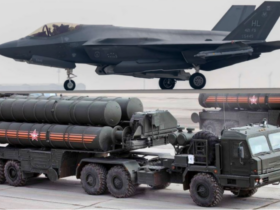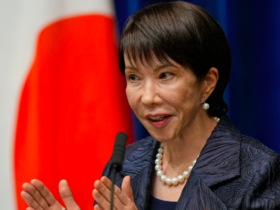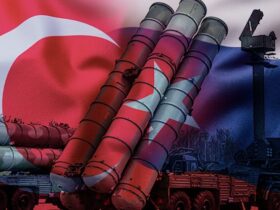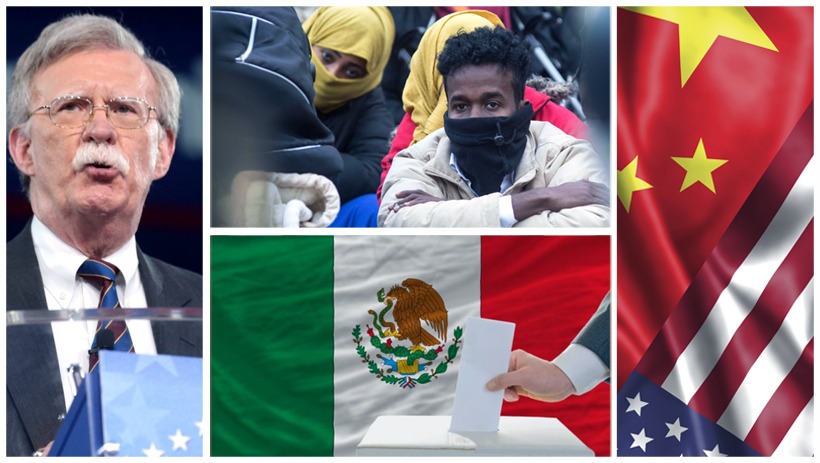For China, the base is part of a strategic push for the development of a chain of strategic nodes in the Indo-Pacific.
For China, the base is part of a strategic push for the development of a chain of strategic nodes in the Indo-Pacific.
By Mehmet Enes Beşer
Cambodia’s Ream Naval Base has emerged as a fulcrum of Southeast Asia’s geopolitically charged politics, the fine dance of great power politics and national interests. Bloating Cambodia-China relations at the base have surprised regional actors and great powers and sent shivers down their spines, striking a chord with widespread sentiments against China’s expanding presence in the Indo-Pacific theater.
Cambodia’s Strategic Rationales
Cambodia’s involvement with China, and by extension the Ream Naval Base, is motivated by an intersection of history, economics, and security interests. Cambodia has always attempted to balance tightropes in the field of international relations, ever finding herself between the great powers in pursuit of sovereignty as well as national interest. Historically, particularly in recent decades, Cambodia’s strongest driver for engagement has been with China on an enormous level of economic investment, and military support.
From an economic perspective, Chinese investment has been the single largest driver of Cambodia’s path of development. BRI projects have been made a reality through the development of mega-infrastructure projects which have increased Cambodia’s connectivity as well as its economic growth. Construction of the Ream Naval Base, constructed and funded by Chinese investors, is in line with Cambodia’s ambitions to increase its naval capabilities. Expansion is viewed by Phnom Penh as an opportunity to build up its defensive infrastructure without heavily taxing its limited resources.
Security concerns compel Cambodia’s leadership by historical and ongoing threats. Cambodia has been subject to border disputes and regional tensions, prompting it to pursue an assertive defense policy. Cooperating with China in modernizing the Ream Naval Base is viewed as a pragmatic approach to strengthening its naval capabilities, thus defending its maritime interests.
China’s Strategic Interests
To China, the Ream Naval Base represents an asset in its broader maritime strategy. The base is situated near the Gulf of Thailand, and it gives China access to the prevailing sea lanes, the Strait of Malacca, along which the majority of China’s imported energy flows. Ream’s ownership enhances China’s power projection and defense means for safeguarding its maritime interests in the South China Sea and the world at large.
It also entails the presence at Ream as a component of China’s strategic push for the development of a chain of strategic nodes in the Indo-Pacific. Just like its enclave in Djibouti, access to Ream will increase PLAN logistics for long-term operations in far-seas. This will be commensurate with China’s need to protect foreign interests and further international maritime security efforts.
Regional and Global Reactions
The Cambodia-China cooperation at Ream has drawn various reactions from Southeast Asian neighbors and other great powers. The United States, for instance, has been warning of the implications of Ream becoming a Chinese naval base, and this would destabilize the regional balance in Southeast Asia. In return, the U.S. has attempted to entice Cambodia back into compliance through diplomatic contacts and defense treaties, the most recent instance of a high-profile kind being the port of call visit of the USS Savannah at the Sihanoukville port of call—a first in eight years.
Local players like Vietnam and Thailand also remain vigilant regarding developments in Ream. Vietnam, ever concerned about Chinese motives, disapproves of increased Chinese activity in Cambodia. Thailand, while enjoying good relations with Cambodia and China as well, looks at the larger picture for regional security interests.
Domestic Considerations in Cambodia
Locally, Cambodian politics under Hun Sen has utilized diplomatic relations with China to spur economic development and political stability. Chinese investment has dominated infrastructural growth and economic development. This has, however, sparked local debate on sovereignty and future dependence on China.
Cambodian public perception is multifaceted, with elements of society being worried about Chinese investment’s environmental degradation, land concessions, and socio-economic impacts. How to balance the material gains of Chinese cooperation with responding to local issues and upholding national sovereignty will be the problem for the government.
Strategic Implications and Future Trajectories
The Ream Naval Base projects symbolize the grand strategic struggle of Southeast Asia, where investment in infrastructure and geopolitical ambition collide. For Cambodia, the Chinese deal signifies short-term benefits, but at the expense of a fine balancing act of not being too dependent and remaining at equidistance from other major powers.
To China, access to Ream is a proper one in its pursuit of securing sea channels and projecting influence. The move must, however, be sought prudently to outsmart regional concerns and prevent encirclement perceptions by other actors in the region.
To the world at large, and to ASEAN members and the United States in particular, the experience is a reminder that Cambodia needs to be taken seriously in order to counterbalance policymakers’ overtilt towards Beijing. Associated friendships, respect for Cambodian sovereignty, and development assistance can be a counterweight against Chinese influence to create Cambodian strategic decision-making for promoting regional stability and not undermining it.
Cambodia’s development of Ream Naval Base is typical of Cambodia conducting great power politics. While Cambodia collaborates with China to develop naval power, it has to tread between so doing in the cover of sovereignty, domestic requirements, and collaborative strategies with other Southeast Asian and non-Regional/global allies. Shifting dynamics in Ream will always serve as a barometer of Southeast Asia’s political mood, exposing the delicate balancing act that small states must perform in the context of great-power strategic rivalry.

















Leave a Reply